Nikolaos Thomos
Performance Analysis of OTFS-NOMA System with Fractional Doppler
Oct 14, 2024Abstract:In this work, we investigate the effect of fractional Doppler on the performance of a system using orthogonal time frequency space (OTFS) modulation and non-orthogonal multiple access (NOMA) where users have different mobility profiles. Fractional Doppler results in inter-Doppler interference (IDI) and degrades the quality of OTFS-modulated signals. We consider a downlink (DL) communication scenario where multiple users are distinguished based on their mobility profiles into a single high-mobility (HM) user and multiple low-mobility (LM) users. OTFS modulation is implemented for the HM user by embedding its information symbols in the delay-Doppler domain, while LM users' symbols are represented in the time-frequency (TF) domain. The LM users' signals are kept orthogonal to each other in the frequency domain by accessing disjoint subcarriers. Further, NOMA spectrum sharing is implemented between the HM user and the KM users to achieve higher spectral efficiency. Performance analysis in terms of DL spectral efficiency and outage probability is conducted for different system parameters. The numerical results show that IDI has a noticeable performance impact on the HM user, depending on the NOMA parameters.
OTFS-NOMA System for MIMO Communication Networks with Spatial Diversity
Jun 27, 2024



Abstract:In this work, we study the use of non-orthogonal multiple access (NOMA) and orthogonal time frequency space (OTFS) modulation in a multiple-input multiple-output (MIMO) communication network where mobile users (MUs) with different mobility profiles are grouped into clusters. We consider a downlink scenario where a base station (BS) communicates with multiple users that have diverse mobility profiles. High-mobility (HM) users' signals are placed in the delay-Doppler (DD) domain using OTFS modulation in order to transform their time-varying channel into a sparse static channel, while low-mobility (LM) users signals are placed in the time-frequency (TF) domain. Precoding is adopted at the BS to direct focused beams towards each cluster of users. Moreover, NOMA spectrum sharing is used in each cluster to allow the coexistence of a single HM user and multiple LM users within the same resource block. LM users access disjoint subchannels to ensure their orthogonality. All users within the same cluster first detect the HM user's signal. Afterward, LM users suppress the interference from the HM user and detect their own signals. Closed-form expressions of the detection signal-to-noise ratios (SNRs) are derived. The numerical results showed that the performance of the proposed system highly depends on the number of LM users, the number of clusters and the power allocation factors between HM and LM users.
Multi-Agent Deep Reinforcement Learning in Vehicular OCC
May 05, 2022
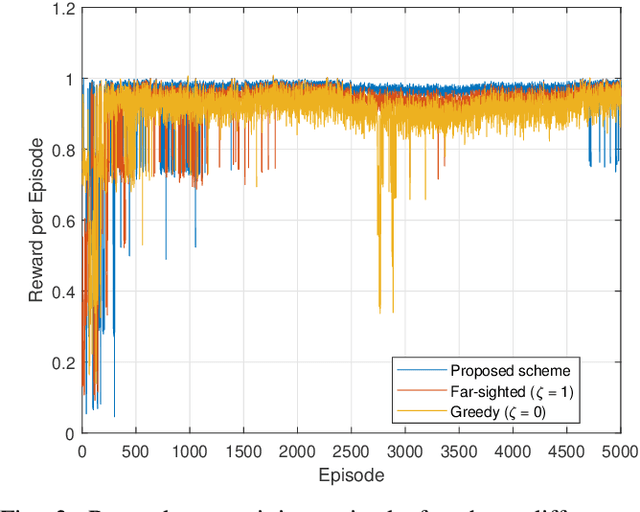
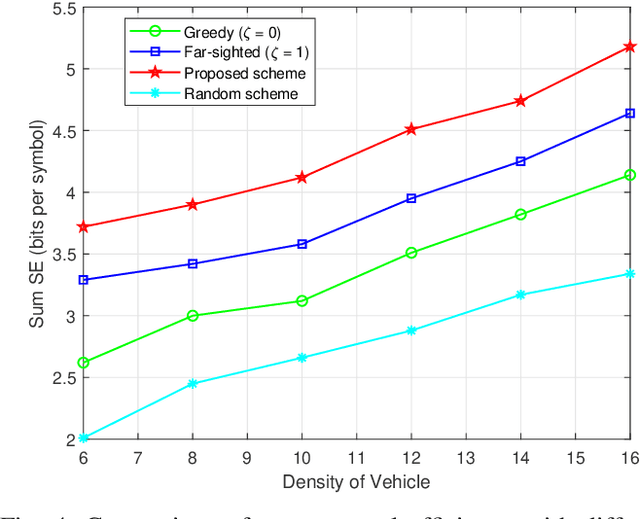

Abstract:Optical camera communications (OCC) has emerged as a key enabling technology for the seamless operation of future autonomous vehicles. In this paper, we introduce a spectral efficiency optimization approach in vehicular OCC. Specifically, we aim at optimally adapting the modulation order and the relative speed while respecting bit error rate and latency constraints. As the optimization problem is NP-hard problem, we model the optimization problem as a Markov decision process (MDP) to enable the use of solutions that can be applied online. We then relaxed the constrained problem by employing Lagrange relaxation approach before solving it by multi-agent deep reinforcement learning (DRL). We verify the performance of our proposed scheme through extensive simulations and compare it with various variants of our approach and a random method. The evaluation shows that our system achieves significantly higher sum spectral efficiency compared to schemes under comparison.
Viewport-Aware Deep Reinforcement Learning Approach for 360$^o$ Video Caching
Apr 10, 2020



Abstract:360$^o$ video is an essential component of VR/AR/MR systems that provides immersive experience to the users. However, 360$^o$ video is associated with high bandwidth requirements. The required bandwidth can be reduced by exploiting the fact that users are interested in viewing only a part of the video scene and that users request viewports that overlap with each other. Motivated by the findings of recent works where the benefits of caching video tiles at edge servers instead of caching entire 360$^o$ videos were shown, in this paper, we introduce the concept of virtual viewports that have the same number of tiles with the original viewports. The tiles forming these viewports are the most popular ones for each video and are determined by the users' requests. Then, we propose a proactive caching scheme that assumes unknown videos' and viewports' popularity. Our scheme determines which videos to cache as well as which is the optimal virtual viewport per video. Virtual viewports permit to lower the dimensionality of the cache optimization problem. To solve the problem, we first formulate the content placement of 360$^o$ videos in edge cache networks as a Markov Decision Process (MDP), and then we determine the optimal caching placement using the Deep Q-Network (DQN) algorithm. The proposed solution aims at maximizing the overall quality of the 360$^o$ videos delivered to the end-users by caching the most popular 360$^o$ videos at base quality along with a virtual viewport in high quality. We extensively evaluate the performance of the proposed system and compare it with that of known systems such as LFU, LRU, FIFO, over both synthetic and real 360$^o$ video traces. The results reveal the large benefits coming from proactive caching of virtual viewports instead of the original ones in terms of the overall quality of the rendered viewports, the cache hit ratio, and the servicing cost.
Design of Capacity-Approaching Low-Density Parity-Check Codes using Recurrent Neural Networks
Jan 05, 2020
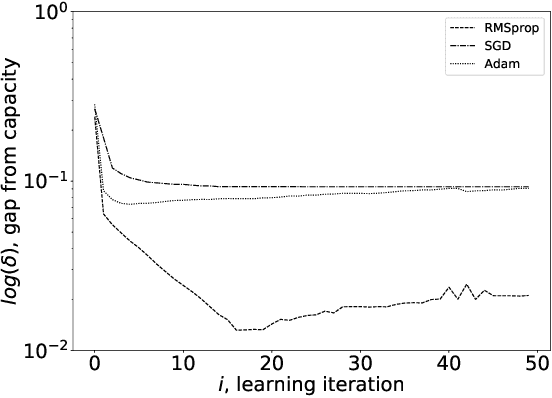
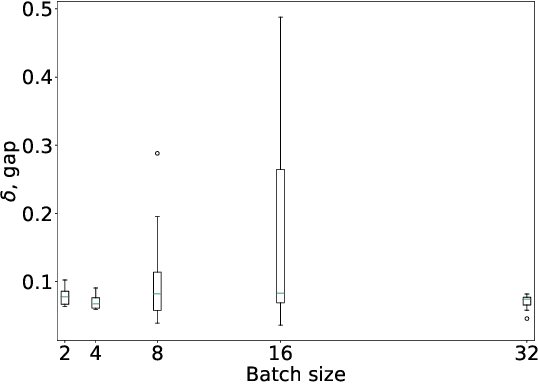
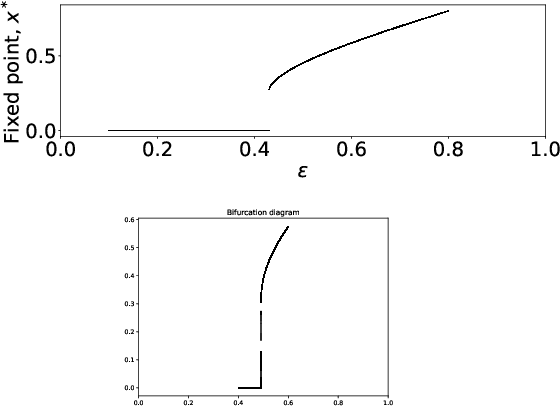
Abstract:In this paper, we model Density Evolution (DE) using Recurrent Neural Networks (RNNs) with the aim of designing capacity-approaching Irregular Low-Density Parity-Check (LDPC) codes for binary erasure channels. In particular, we present a method for determining the coefficients of the degree distributions, characterizing the structure of an LDPC code. We refer to our RNN architecture as Neural Density Evolution (NDE) and determine the weights of the RNN that correspond to optimal designs by minimizing a loss function that enforces the properties of asymptotically optimal design, as well as the desired structural characteristics of the code. This renders the LDPC design process highly configurable, as constraints can be added to meet applications' requirements by means of modifying the loss function. In order to train the RNN, we generate data corresponding to the expected channel noise. We analyze the complexity and optimality of NDE theoretically, and compare it with traditional design methods that employ differential evolution. Simulations illustrate that NDE improves upon differential evolution both in terms of asymptotic performance and complexity. Although we focus on asymptotic settings, we evaluate designs found by NDE for finite codeword lengths and observe that performance remains satisfactory across a variety of channels.
 Add to Chrome
Add to Chrome Add to Firefox
Add to Firefox Add to Edge
Add to Edge